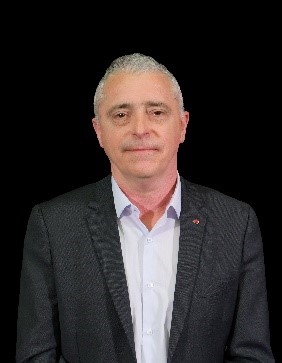Operational superiority in the field: staying one step ahead

Interview with an Expert:
General Bernard Barrera
Land Defence Advisor, Thales
How would you describe the threat environment facing the armed forces today?
The world is changing. The strategic balance of power is being challenged in every type of conflict– on land, at sea, under the oceans, in the air, in space and in cyberspace. To meet future challenges in high-intensity airland combat, land forces need to develop new capabilities at a faster pace to ensure that hostile forces can be defeated, guarantee national sovereignty and keep populations safe.
Against this backdrop, the digital transformation, and the ability to harness its potential to deliver new effects, have become absolutely vital.
What types of new technologies do the armed forces need?
The digital transformation is affecting our lives a little more every day. We can see its influence on innovation, research and development, but it is also having a major impact on military operations in the field.
Digitalisation allows command centres to share and analyse critical information quickly and more effectively. Provided the necessary cyber protection is in place, high-data-rate connectivity, big data, artificial intelligence, the move to the cloud and the Internet of Things have the potential to radically speed up the OODA loop (Observe, Orient, Decide, Act) and drive a deep-seated transformation of military affairs.
All the stakeholders in the defence community are seeking ways to leverage these technologies to meet their operational requirements in terms of decision support, collaborative combat, data analytics, multi-source intelligence data fusion, force protection, resilience, etc.
At the same time, as we have seen in the most recent confrontations, the use of robotic systems, and in particular drones, is changing the way that military operations are conducted in both conventional and asymmetrical conflicts.
How can Thales support land forces in these changes? And will it really make all the difference?
Thales supports the armed forces by training their personnel to use these new systems and technologies, and by putting in place robust supply chains that rely on trusted partners and local industries in each country or region.
Thales has the unique ability not only to design the overall architectures of the most complex systems in an end-to-end approach, but also to develop the individual pieces of equipment (sensors, effectors, connectivity, etc.) that make up these systems. The company's know-how spans multiple disciplines, from building intelligence into all types of platforms to integrating these intelligent platforms into the combat environment based on a clear understanding of how they are deployed and operated in the field. Thanks to these capabilities, collaborative combat is already a reality.
As a trusted partner to the armed forces across all domains, Thales helps its defence customers to achieve tactical superiority and maintain their strategic independence.
With its unflagging commitment to innovation and digital technologies, Thales ensures that all its solutions are cohesive and complementary and developed from the outset to guarantee interoperability between systems and compatibility between different generations of equipment.
Thales focuses its efforts on developing technologies and capabilities that are disruptive yet easy-to-use and solutions that will provide land forces with the operational and information superiority they need.
In the field of connectivity, higher data rates, lower latency and better range performance will enable forces to make decisions faster, and to do more with less. As the threat environment evolves, Thales technologies (cloud-based solutions, satcom terminals, allied interoperability, etc.) offer the armed forces a unique combination of agility, discretion, performance and protection of command capabilities.
New sensors not only offer better range and precision but also rely on artificial intelligence to extract useful information from very large volumes of data and support more effective decision-making. The use of interconnected sensors will rapidly improve situational awareness for units in the field, helping to dispel the fog of war.
In terms of intelligence, Thales aims to offer commanders a multi-dimensional view of the battlefield by correlating data from multiple sources, including imagery and electronic warfare systems as well as human and open-source intelligence. Here too, artificial intelligence will help analysts handle the huge volumes of data generated by multiple sources of intelligence.
At a tactical level, land and airland vehicle electronics, the Combat Digital Platform and secure cloud environments will enable communities of interest to share information in real time, making tactical manoeuvres more fluid and more transparent for mounted or dismounted forces with their soldier systems.
Thales is also developing new effectors with greater accuracy and agility to provide tomorrow's platforms with broader capabilities and reduce the logistics footprint of the forces in the field.
Last but not least, just like software-defined radios, software-defined networks and radar systems will be a real game-changer for land forces. With these new technologies, the software is regularly updated to take new threats into account and mitigate issues of equipment obsolescence.
Which Thales systems and equipment have been proven in combat?
From smart sensors and combat systems to soldier equipment and connectivity solutions for the digital battlefield, our systems deliver information superiority and enable deployed forces to stay in charge at every decisive moment. Combat-proven solutions in operational use on a routine basis include the CERBERE simulation system, satellite communication systems (VAB ML, HDTAC, Venus, Astride), tactical communication systems (PR4G, Melchior), mortar systems, radars, optical sighting systems for armoured vehicles and helicopters, solider optronics systems, drones (Spy'Ranger), and the GA 10 and SL2A protection systems deployed at French bases in the Sahel.
The French Army is making the transition to connected, collaborative combat with the SCORPION vehicle programme and the CONTACT software-defined radio programme.
These two programmes are part of a broader move towards the “battlespace Internet”, in which smart sensors and effectors will be interconnected to make the battlefield more transparent, increase the tempo of operations and ensure operational superiority.